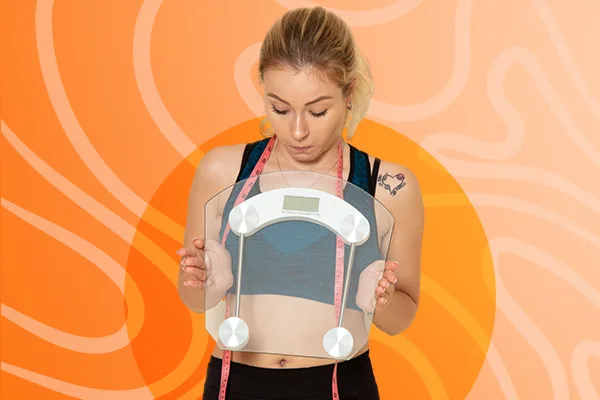What Is a Body Index Calculator and How Is It Better Than BMI?
A Body Index Calculator offers a more complete view of your health than BMI by including key metrics like:
- Body fat percentage
- Waist-to-hip ratio
- Muscle mass
- Visceral fat levels
- Basal metabolic rate (BMR)
Unlike BMI, which only uses height and weight, the Body Index Calculator gives personalized, accurate insights based on age, gender, and body composition—helping you better track fitness and health risks.
When it comes to assessing overall health, most of us are familiar with the term BMI or Body Mass Index. It’s a simple calculation based on height and weight, designed to categorize individuals into ranges like underweight, normal weight, overweight, or obese. While BMI has been widely used for decades, its limitations have sparked the need for more inclusive and accurate health measurements. This is where the concept of the Body Index comes into play.
In this article, we’ll dive into what the Body Index is, how it differs from the traditional Body Mass Index, and why you might consider using a body index calculator to better understand your health.

What Is the Body Index?
The Body Index is a broader concept that incorporates multiple measurements of physical health, going beyond the basic height-to-weight ratio used in BMI. While BMI focuses solely on body mass, this measurement takes into account additional factors such as:
- Body composition (fat percentage vs. muscle mass)
- Waist-to-hip ratio
- Bone density
- Age and gender differences
- Overall body shape
The idea behind this index is that health is multifaceted and cannot be fully captured by a single number. Two people with the same BMI may have very different health profiles depending on their muscle mass, fat distribution, and other factors. The Body Index offers a more holistic view, helping individuals and healthcare professionals make better-informed decisions about fitness and health.
Weight
Height
Age

Why BMI Falls Short as a Health Metric
The BMI Calculator has been a popular tool for decades, but it has significant drawbacks. While it is easy to use and provides a quick estimate of whether someone is in a healthy weight range, it doesn’t paint the full picture. Here are some key limitations of BMI:
1. It Doesn’t Differentiate Between Fat and Muscle
BMI does not account for body composition. For example, a professional athlete with high muscle mass might be classified as overweight or even obese by BMI standards, despite being in excellent physical condition.
2. It Ignores Fat Distribution
Where fat is stored in the body matters more than how much fat you have. Excess fat around the abdomen (visceral fat) is more strongly linked to health risks like heart disease and diabetes than fat stored in other areas, such as the hips or thighs. BMI does not consider this critical factor.
3. It Doesn’t Account for Age or Gender
BMI uses the same formula for everyone, regardless of age or gender. However, body composition changes naturally with age, and men’s BMIs are different from women’s BMIs because of different fat distribution patterns. For example, women typically carry more body fat than men, but that doesn’t mean they are less healthy.
4. It Overlooks Bone Density
Bone density variations can significantly affect body weight. Someone with high bone density may weigh more but still have a very healthy body composition, which BMI fails to capture.

How the Body Index Works
This index aims to address these shortcomings by incorporating additional metrics that give a more nuanced view of health. Tools like a body index calculator can include measurements such as:
- Body Fat Percentage: The proportion of fat to total body weight. This is a better indicator of health risks than BMI alone.
- Waist-to-Hip Ratio (WHR): A measurement of fat distribution, particularly around the midsection, which is linked to cardiovascular health.
- Muscle Mass: The amount of muscle in the body, which plays a crucial role in metabolism and overall physical performance.
- Basal Metabolic Rate (BMR): The number of calories your body needs to function at rest, which varies depending on your body composition.
- Visceral Fat Levels: The amount of fat stored around internal organs.
These factors provide a much more comprehensive understanding of your overall health and fitness. By analyzing these metrics, the Body Index helps identify potential health risks that BMI might miss.

Benefits of Using a Body Index Calculator
Switching from a traditional BMI calculator to a more advanced body index calculator has several advantages:
1. Personalized Health Insights
Because the Body Index considers factors like age, gender, and body composition, it offers a more personalized analysis of your health status.
2. Better Risk Assessment
By including measurements like visceral fat and waist-to-hip ratio, the Body Index is better at predicting health risks such as heart disease, diabetes, and metabolic disorders.
3. Guides Fitness Goals
Understanding your muscle mass and fat percentage can help you set more targeted fitness and weight-loss goals. For example, someone looking to lose fat but maintain muscle mass would benefit from tracking these metrics.
4. Encourages Holistic Health
The Body Index emphasizes overall health rather than focusing solely on weight. This can help shift the focus from achieving a specific number on the scale to improving overall well-being.

How to Measure Your Body Index
Thanks to advancements in technology, measuring your Body Index is easier than ever. Many modern calculators are available online, and some smart scales and fitness apps now include features to track metrics like body fat percentage and muscle mass.
To get the most accurate results, you may also consider consulting a healthcare provider or using professional tools like:
- DEXA Scans: Measures bone density and body composition.
- Bioelectrical Impedance Analysis (BIA): A common method for estimating body fat percentage.
- Calipers: Used to measure skinfold thickness for body fat estimation.
Moving Beyond BMI: Why It Matters
Understanding your Body Index can be a game-changer for your health journey. Unlike BMI, which often oversimplifies the complex nature of health and fitness, the Body Index provides a more complete picture. This not only helps individuals make better lifestyle choices but also aids healthcare providers in tailoring treatments and interventions.
By focusing on metrics that matter—like body fat percentage, visceral fat, and muscle mass—you can take proactive steps to improve your health. Whether you’re aiming to lose weight, build muscle, or simply maintain a healthy lifestyle, this Index is a valuable tool for tracking your progress.

Final Thoughts: Body Index Calcuator
The Body Index is a significant step forward in how we measure and understand health. While the body mass index calculator has its place as a quick reference, it’s clear that more comprehensive tools like a body index calculator offer deeper insights into overall well-being.
If you’re serious about improving your health, it’s time to go beyond BMI and explore what this index has to offer. By doing so, you’ll be better equipped to make informed decisions, set realistic goals, and achieve a healthier, more balanced life.
References






